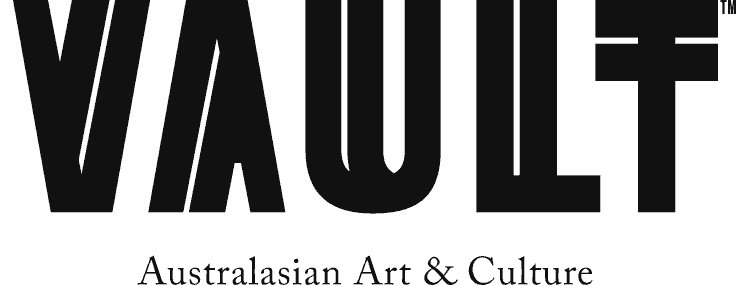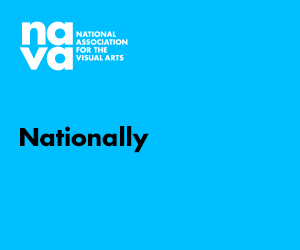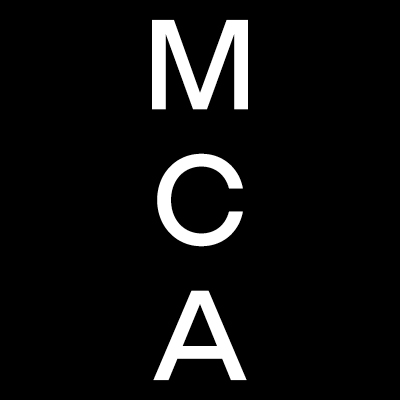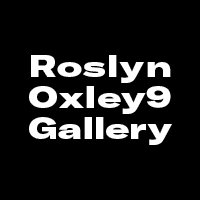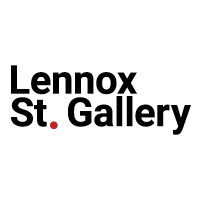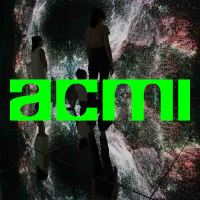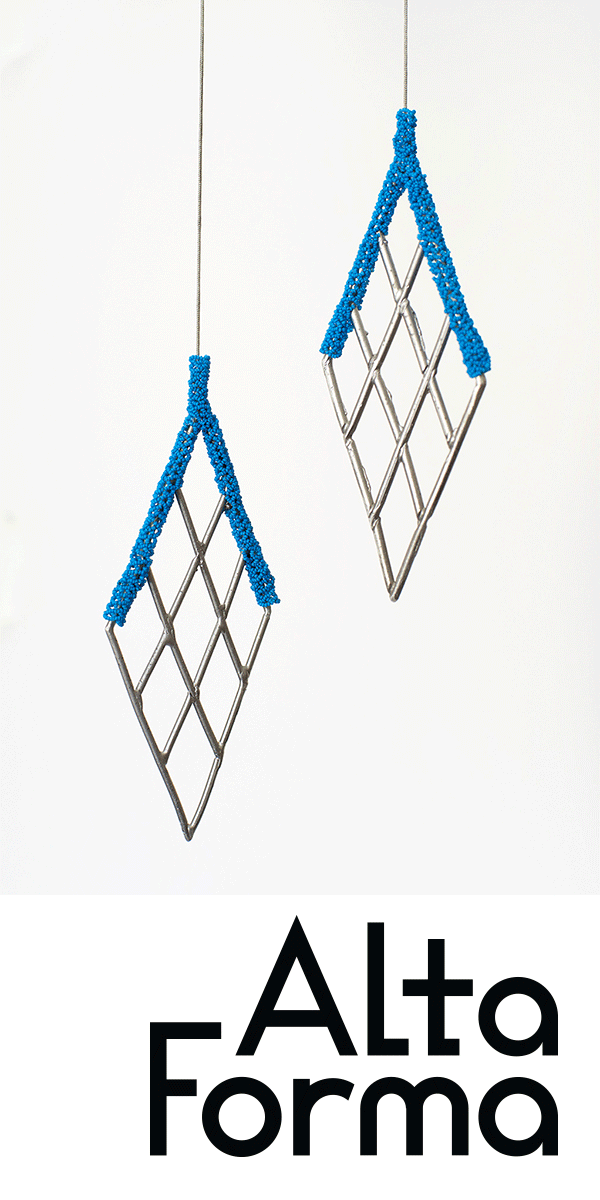Non-Fungible Tokens: The Future is Here
WTF is an NFT?

Image credit: EVE SUSSMAN, 89 Seconds Atomized, 2018 (randomized view), moving image; 2,304 corresponding Non-Fungible Tokens, 20 x 20 pixels each, 10 minutes duration each. Copyright and courtesy Eve Sussman and Snark.art
March 11, 2021. A day that will live in art world infamy. Through Christie’s, powered by Makers Place, EVERYDAYS: THE FIRST 5000 DAYS (2021), a composite work of 5000 drawings by Mike Winkelmann – a Wisconsin-born, South Carolina-based illustrator practicing under the mononym Beeple – sold for the cryptocurrency equivalent of USD 63.9 million.
The sale made waves for several reasons. First, as the third most expensive artwork ever sold by a living artist at auction – only behind works by Jeff Koons and David Hockney. Second, as the first digital-only artwork ever sold by a major auction house. Third, as the first time a major auction house accepted payment in cryptocurrency. And fourth, alongside all of the above the artist was an ostensible art world unknown, and the artwork in question no masterpiece.
But let’s rewind.
What are NFTs, or non-fungible tokens? They are digital signifiers of ownership. Ownership of what? Honestly, anything digital or physical. A video clip of an athlete. A tweet. An artwork. NFTs are a way to ‘own’ purely digital things, and also to digitally record ownership of physical things.
NFTs are a potential income stream for their creators, and also a potential income stream – through investment and resale – for their buyers. But all of this depends on NFTs having financial value. On March 22, 2021, Jack Dorsey (co-founder and CEO of Twitter) sold his first-ever tweet as an NFT for over USD 2.9 million, through the platform Valuables. The tweet itself continues to live on Twitter, but the winning bidder owns the NFT. Setting aside why someone would buy a tweet, how did it command this price? What is the value of a tweet, and of owning a tweet, when it is freely available, ostensibly in perpetuity, to anyone in the world with internet access? How is the value of a tweet determined? Three key concepts to quickly cover: financial value, currency and scarcity.

Image credit: JACK DORSEY, Untitled, 2006-21, Tweet; corresponding Non-Fungible Token First tweet by Jack Dorsey, co-founder and CEO of Twitter, sold for over USD 2.9 million on Valuables. Courtesy of Valuables
Human beings use financial value as a proxy for the inherent value of goods and services. We measure and denote this financial value mathematically, in various currencies. Different nations and regions use different currencies, and the tradable financial value of each currency fluctuates according to several factors – which are measured and denoted through exchange rates. Each individual unit of a currency (whether a physical coin or note, or a number in a bank account on a computer) can be considered a ‘token’ of financial value and, by (imperfect) proxy, of inherent value. Each coin or number is not value itself, but a symbolic representation of value.
Crucially, this system relies on mutual agreement – currencies hold value because we agree that they do. Currencies are thus artificial constructs with no inherent value other than that with which we endow them. Our ancestors created this system of measuring and exchanging value, and that system underpins our 21st century economy and society.
So, currency is the tool we use to describe financial value, and to trade goods and services. Overall, the financial value of a thing (under capitalism and the free market) is what someone is willing to pay for it. So, what are you willing to pay for a tweet? This is where the concept of scarcity comes in.
Capitalism’s fundamental mandate is scarcity – that there are finite resources available in the world. Generally, the scarcer something is, the more financially valuable it is. Things we perceive as rare – diamonds, gold, a unique artwork – we perceive as more valuable than those we perceive as abundant or interchangeable. The scarcity of physical objects is relatively easy to measure (although the relationship between scarcity and value is thornier in the case of the art market, courtesy of cultural and historical value, among other factors). Scarcity in the digital world is more complicated, and more complicated in the digital art market still.
The arts economy has relied on the patronage model for as long as recorded human history, but especially from the 15th century onwards, since the Renaissance in Europe. Under this economic framework, wealthy benefactors pay artists for works to be produced and/or for works that have already been produced. These works join a benefactor’s personal collection and are loaned out and eventually bequeathed, or they are immediately donated to museums and galleries. The value of these works either increases a benefactor’s assets or is written off against their taxes, and the general public view the works in museums and galleries for free or a small fee. Seemingly everyone – artist, benefactor, public – wins. But this only holds true when an artwork’s financial value is easily calculable – that is, when its scarcity is simple enough to determine.
When something is identical, or so similar as to be interchangeable, it is, in finance-speak, ‘fungible’. Artworks have not, traditionally, been fungible – one artwork is not equivalent to another. Even in cases where this might be true enough – photographs and prints – it is not, because they are editioned (another kind of manufactured scarcity). But what about digital artworks? Majority of digital assets are theoretically infinite in their existence. For example, a .jpg file can be copy-pasted and shared as many times as you like, its bits and bytes identical. What is the difference between each of these copies, and what is the value of each of these copies? How do you assign value when scarcity doesn’t exist? This obstacle has stood between digital creators and creatives of all manner and remuneration for their work for decades. The answer, apparently, is to construct scarcity. Instead of selling a digital artwork itself – which remains infinitely replicable, distributable and uncontrollable – sell the ownership rights to the work. Enter NFTs: non-fungible tokens.
So, what if digital creators could be fairly compensated for their work, and their artworks? That’s the big idea behind NFTs. In 2014, technologist Anil Dash and artist Kevin McCoy created what is generally considered to be the first-ever true NFT at Seven on Seven, an annual event held in New York City connecting technologists and artists. In Dash’s words: “The idea behind NFTs was, and is, profound. Technology should be enabling artists to exercise control over their work, to more easily sell it, to more strongly protect against others appropriating it without permission. By devising the technology specifically for artistic use, McCoy and I hoped we might prevent it from becoming yet another method of exploiting creative professionals.” (Dash continued, “But nothing went the way it was supposed to.” We’ll come back to that.)

Image credit: BEEPLE, EVERYDAYS: THE FIRST 5000 DAYS, 2021, .jpg file; corresponding Non-Fungible Token, 21,069 x 21,069 pixels (319,168,313 bytes). Copyright and courtesy Beeple and Christie’s
EVERYDAYS, and Beeple, make terrible poster children for the art-as-NFT/NFT-as-art phenomenon. The high-ticket price of the sale drew the internet and the art world’s attention, and with that increased visibility came increased scrutiny. Netizens and art critics zoomed in on the individual 5000 artworks of EVERYDAYS and found them unabashedly racist, homophobic and sexist. Christie’s was lambasted for propping up and cashing in on a bigot, and for trying to pass off digital drawings pulled from the bowels of Reddit as akin to 21st century Duchampian readymades.
For all its infamy, EVERYDAYS was not, in fact, Christie’s very first NFT – that honour belongs to Block 21 (42.36433° N, -71.26189° E) (from Portraits of a Mind)(2019), a work by London-based artist Benjamin Gentilli, practicing under the name Robert Alice. Block 21 sold for USD 131,250 on October 7, 2020, septupling its high-estimate value of USD 18,000. Block 21 was a softer entry into crypto-art for Christie’s – the sale was made in USD (not cryptocurrency) and was not a purely digital artwork but rather a hybrid: a physical object paired with a digital counterpart. The buyer was provided with an OpenDime hardware key – a physical object resembling a USB stick. Before the NFT sale the original series, Portraits of a Mind, was exhibited at Christie’s in New York. EVERYDAYS, in contrast, marked both the first digital-only work sold by Christie’s and the first time the auction house agreed to accept payment in cryptocurrency – in this case, precisely 42,329.453 Ethereum (ETH). But here’s the thing: the buyer’s premium (Christie’s’ cut) couldn’t be paid in cryptocurrency. It had to be paid in cash. USD 9 million (or thereabouts) in real, fiat money.
What’s the difference between regular, fiat currencies and cryptocurrencies? Why does it matter that Christie’s took their cut in fiat currency? Currencies are artificial constructs with no inherent value but that with which we endow them – this is true for fiat currencies and for cryptocurrencies. Fiat currencies are regulated and backed by central banks, which control the amount of money circulating in the economy through how much is printed, interest rates, foreign reserves and other levers – the overall goal being to keep inflation in line with growth, and to keep the value of the currency stable.
Without a central bank to regulate them and monitor their supply, any new currency could be theoretically infinite – and as we know, without scarcity there is no financial value. But cryptocurrencies, part of the decentralised finance movement (DeFi), have been designed with this in mind. Their individual units (‘coins’) are ‘mined’, a process by which supercomputers are used to solve increasingly-complex mathematical problems. Solving a problem releases coins. This process theoretically controls the supply of the cryptocurrency, and therefore its scarcity and financial value. But cryptocurrencies are notorious for their lack of stability. Their values fluctuate wildly and regularly, whether on the whims of billionaires (a tweet by Elon Musk about Tesla accepting Dogecoin, a meme-turned-cryptocurrency, sent its value soaring above that of Bitcoin) or in response to new economic policies (El Salvador introducing Bitcoin as legal tender, China banning all cryptocurrency transactions). The value and utility of a currency relies on mutual agreement, which must be widespread, if not unanimous. But with so many cryptocurrencies around, so little to use them on and no backing by a central bank, little mutual agreement exists – and what little does exist is fickle. All of this means that cryptocurrencies, and NFTs, are speculative assets. In other words, they are high-risk. They take on an order of magnitude of additional risk, taking place in a sort of digital international waters.
Before the EVERYDAYS sale, its Christie’s representative Noah Davis told Art Market Monitor: “We’re at this moment in time where there could be a drastic shift – a demographic shift, a generational shift – when it comes to what excites younger collectors.” He continued: “Christie’s as an organisation is really excited about a moment in time where you see $3.5 million of sales just organically appear out of thin air. That’s something we want to capitalise on.” It’s difficult not to be sceptical about the motivation and role of Christie’s, with their representatives making comments like that all the while taking their cut in fiat currency. All reward, no risk. But since when did we expect auction houses to be paragons of integrity, invested in the careers and livelihoods of artists, dedicated to meaningful art? Maybe it’s naive to expect anything other than a money-grabbing knife-fight to the bottom – and it’s not all Christie’s.
In the ‘regular’ art market, sales staff at major galleries monitor secondary market sales, looking for works they have sold to collectors. Collectors who sell works are considered ‘flippers’, responsible for skyrocketing artwork prices that subsequently fall flat and do not recover. These people are often barred from future purchases through the gallery. New high-value works by major, established artists are often ‘institution-only’ – that is, they are only available for purchase by or for an institution. ‘Placing’ works in collections – private and public – is part of a gallery’s job as an artist’s representative, stabilising the value of their work, ensuring works are appropriately cared for, managing their legacy and, in many cases, ensuring that works will be available to the public to view (instead of sitting in a private estate or freeport).
As speculative assets, NFTs were always destined for a degree of resale. But the numbers are staggering. NonFungible, a market aggregator, tracks real-time sales data across NFTs in different fields – ‘metaverse’, ‘utility’, ‘art’, ‘sports’, ‘game’, ‘DeFi’ and ‘collectible’. Secondary sales exceed primary sales in both volume and value. At time of writing, 276,400 primary sales of art NFTs had been made in the last 30 days, with a total value of USD 268.2 million, compared to 339,826 secondary sales with a total value of USD 1.3 billion. Flippety-doo-dah.
But NFTs promise more than cash (or cryptocash) – in theory. Where one person sees, in the EVERYDAYS sale, mercenaryism, another sees a huge opportunity for an artist outside the traditional structures of the art world. Through this lens, NFTs deliver on their promise of democratisation, with lowered barriers to entry for both creating and collecting art. In this utopic vision of the art world, there is no gatekeeping by commercial galleries around who can buy what, who is an artist and which artists are available to collectors. There is also the promise of fairness, both now and in the future, through ‘smart contracts’ that ensure royalties from future sales and other conditions, and transparency and security through the public digital ledgers that are the blockchains on which NFTs are ‘minted’ (created) and registered.
NFTs promise a lot, and it’s a seductive vision of a new, digital-first art world. But what do they deliver? Remember what Anil Dash said – nothing went the way it was supposed to. First and foremost, NFTs, and the blockchains and cryptocurrencies on which they rely, are exorbitantly energy intensive. Artist Joanie Lemercier calculated that by selling six artworks as NFTs, he used more energy than he consumed in his studio over two years. The energy-intensive nature of NFTs is, in part, dependent on the way they presently work – something called proof-of-work (PoW). There are many people all over the world working to change this – moving to a proof-of-stake (PoS) or pure proof-of-stake (PPos) method, developing new blockchains, and moving away from the NFT favourite Ethereum – to reduce the catastrophic environmental damage caused by the explosion of the NFT market. But they’d better hurry up. The climate crisis isn’t waiting for anyone, and a .jpg probably won’t survive the apocalypse. In the meantime, some artists, NFT platforms and blockchains have committed to buying carbon offsets to reverse the damage they are doing. In theory, carbon offsets could be a short-term solution, but their veracity and effectiveness are widely debated.
NFTs are touted as invulnerable and incorruptible. In reality, forgeries and bootlegs abound, as do faults and errors in code. Cases of artworks being sold as NFTs, passed off as legitimate without the artist’s permission or knowledge, are rampant. In other cases – including that of Banksy – artworks by fraudsters are being passed off as legitimate NFTs by popular artists. Technological obsolescence is also, to some degree, inevitable. At the same time, in the IRL art world, new and reinforced anti-money-laundering laws in the US, UK and EU are working to prevent inadvertent and advertent financing of illegal activities, organised crime and terrorism. Cryptocurrencies provide no such protections. There are no legal precedents for when the promises of NFTs fail, and the stakes are high.

Image credit: GAAKMANN, Great Redistribution of the Climate Change Disaster, 2021, Non Fungible Token. Copyright and courtesy gaakmann
And yet there are also exciting opportunities, if we can get them right. For institutions with collections – public and private, museums and galleries – NFTs are an opportunity for revenue-raising. Already, some have got this wrong, enthusiastically auctioning off items from their collections and, in so doing, mortgaging their digital futures through digital deaccessioning. Institutions, and artists: imagine a world in which everything is online, and you’ve already sold it all! Where would that leave you? Much cleverer – absolutely brilliant, in fact – is the approach taken by Whitworth Art Gallery at Manchester University in the UK. Partnering with Vastari – though, crucially, retaining all copyright – Whitworth has released on Hic et Nunc a spectrographic scan of its William Blake watercolour etching The Ancient of Days (1794) in an edition of 50.
Decentralised autonomous organisations (DAOs) – like the Decentralized Autonomous Kunstverein (DAK) – are another opportunity for arts organisations, albeit still nascent. DAOs are communities of people with a shared mandate, and a non-hierarchical, self-governing structure, encoded on a blockchain, whose creations together become NFTs. It’s easy enough to imagine the opportunities for next-generation artist-run initiatives (ARIs) but right now it all sounds pretty utopic, and so far NFTs have fallen rather short.
Individual artists engaging directly with the medium of NFTs, rather than simply recreating works as NFTs, are also breaking exciting ground. Eve Sussman’s 89 Seconds at Alcázar (2004), a moving image work based on Diego Valázquez’spainting Las Meninas (1656), was presented at the Whitney Biennial in 2004, and sold out its edition to the likes of MoMA. Using her final artist’s proof (AP), Sussman worked with Snark.Art to dissect the video into a grid of 2304 squares, each an NFT of 20 x 20 pixels, 10 minutes in duration. The artist retained 804 of the 2304 NFTs of 89 Seconds Atomized (2018), and sold the remaining 1500 for USD 100 each. Maybe, just maybe, this fractured ownership model will deliver some of the accessibility promised by NFTs.

Image credit: BEEPLE, CROSSROAD #1 (still), 2020 .mp4 file; corresponding Non-Fungible Token. Copyright and courtesy Beeple
The promise of NFTs has been extending ownership over things that couldn’t normally be bought or sold. For the most part, the ‘things’ in question are digital, but increasingly NFTs are being used to trade ownership of physical things. For example: public artworks, including street art and murals, for which an artist might otherwise receive either a relatively small artist’s fee from the commissioning body or no income at all. When smart contracts – the terms of current and future sales, embedded in the NFT – work, they can ensure that artists profit from future sales of their work, which might at least cut them in on their inevitable resale/s. In the case of Beeple, for example, another work, CROSSROAD #1 (2020), netted the artist approximately USD 67,000 when it was sold, and a further USD 666,000 when it was resold.
So where do you go if you want to buy one of these NFTs, for better or worse? To an NFT platform, which are multiplying like rabbits, each flooded with tens of thousands of NFTs across art, fashion, music, gaming and more. In the case of art-as-NFTs/NFTs-as-art, platforms connect artists with collectors directly, democratising access by cutting out commercial galleries, dealers and consultants as intermediaries (with a financial stake). In theory, these platforms perform the essential functions – artwork authentication, purchase, payment, etc. – automatically. Platforms still take a cut, but it’s less than the 50% directed to a commercial gallery. At the same time, the tidal wave of art NFTs has overwhelmed the market, and buyers simply don’t know where to start.
In response to this phenomenon, curated platforms for the art world are popping up, one by one. In September 2021 Unit London launched Institut, and in November 2021 notable art NFT collector and patron Pablo Rodriguez-Fraile will launch Aorist. Of the venture, Rodriguez-Fraile says: “As a long-time collector and patron of digital art, I’m excited to see the rapidly growing interest in digital art and its market within the broader art world. At the same time, I am mindful that we are at a pivotal moment where we must be thoughtful about the long-term outlook of the market, creating an environment for artists at the intersection of art and technology to continue to push the boundaries of their practice and thrive ... We are built first and foremost with our audiences in mind – from artists and collectors to first-time buyers and others who are eager to learn more about NFTs – allowing them to discover, interact and collect seamlessly.”

Image credit: ANDRÉS REISINGER, Complicated_Sofa, 2021. Courtesy the artist
Curated art NFT platforms (A-Z)
Aorist. Launching in November. Powered by Algorand, a proof-of-stake blockchain. Creators include Andrés Resinger.
Foundation. Powered by Ethereum, a proof-of-work blockchain. Creators include Edward Snowden.
Institut. Launched in September by Unit London. Powered by Ethereum. Curated by Kenny Schachter.
KnownOrigin. Powered by Ethereum.
Makersplace. Powered by Ethereum.
NFT Showroom. Powered by Hive Engine, a sidechain connected to Hive, a proof-of-stake blockchain.
Nifty Gateway. Powered by Ethereum, backed by Gemini. Creators include Grimes.
Palm. Palm is its own blockchain and a sidechain connected to Ethereum. Creators include Damien Hirst, who is also a co-founder.
Portion. Powered by Ethereum.
Rarible. Powered by Ethereum.
SuperRare and $RARE. Powered by Ethereum.
Hic et Nunc. Not a curated platform, but gets a special mention as the coolest kid on the block. Powered by Tezos, a proof-of-stake blockchain.

Image credit: DAMIEN HIRST, 8483. May I stay like this?, 2016, paint on handmade paper and NFT, 20 x 30 cm © and courtesy Damien Hirst, Science Ltd. & White Cube, London/New York/Paris/Hong Kong

Image credit: DAMIEN HIRST, Detail of watermark. Photo: Prudence Cuming Associates Ltd © Damien Hirst and Science Ltd. All rights reserved, DACS 2021
One of the highest-profile drops in the traditional art world has been Damien Hirst’s The Currency (2021), for which he partnered with HENI and Nifty’s. Hirst entered the metaverse, so to speak, in 2020 with the launch of Spin Art, an Augmented Reality filter inspired by his spin paintings, with Snap. Earlier this year, Hirst partnered with HENI to release The Values, a set of 8 works (each open edition) titled after the Eight Virtues according to Nitobe Inazō’s Bushidō: The Soul of Japan (1900). The Values marked the first time Hirst accepted cryptocurrency for payment. The artist partnered again with HENI to launch The Currency, a series of 10,000 new small-scale spot paintings as NFTs. Each of the 10,000 works corresponds to an NFT. Like Robert Alice’s Block 21 and Eve Sussman’s 89 Seconds Atomized, The Currency attempts to engage meaningfully with its medium. In Hirst’s words: “Ever since I made the diamond skull [For the Love of God (2007)] I’ve been thinking about wealth and value ... The Currency is an artwork, and anyone who buys it will participate in this work, it’s not just about owning it. It is the most exciting project I have ever worked on by far.” The buyer of each individual work in The Currency must choose between owning the physical painting or its corresponding NFT. They must choose carefully – whichever they do not choose is destroyed.

Image credit: DAMIEN HIRST, For the Love of God, 2007, platinum, diamond & human teeth, 17.1 x 12.7 x 19 cm. Photo: Prudence Cuming Associates © and courtesy Damien Hirst, Science Ltd. & White Cube, London/New York/Paris/ Hong Kong
There are many artists working in the NFT space, and some (although not much) exciting work. The spoils of the bullrush, so far, have gone to Beeple, Damien Hirst and their similarly white, straight, cis-het male peers. Not exactly the revolution we were promised – or not yet anyway. There is yet to be an NFT masterpiece, or anything even close – but again, that’s not to say there won’t be. Whether NFTs will be a bubble or a fad, whether they’re a force for good and for good art or simply the worst of late-stage speculative capitalism, we don’t yet know. If there’s anything we have learned, it’s that there’s a market for most anything. Whatever’s there will sell, but will it have artistic merit, cultural value and stand the test of time? That’s up to the artists now.
This article was originally published in VAULT Magazine Issue 36 (November 2021 – January 2022). Click here to Subscribe

